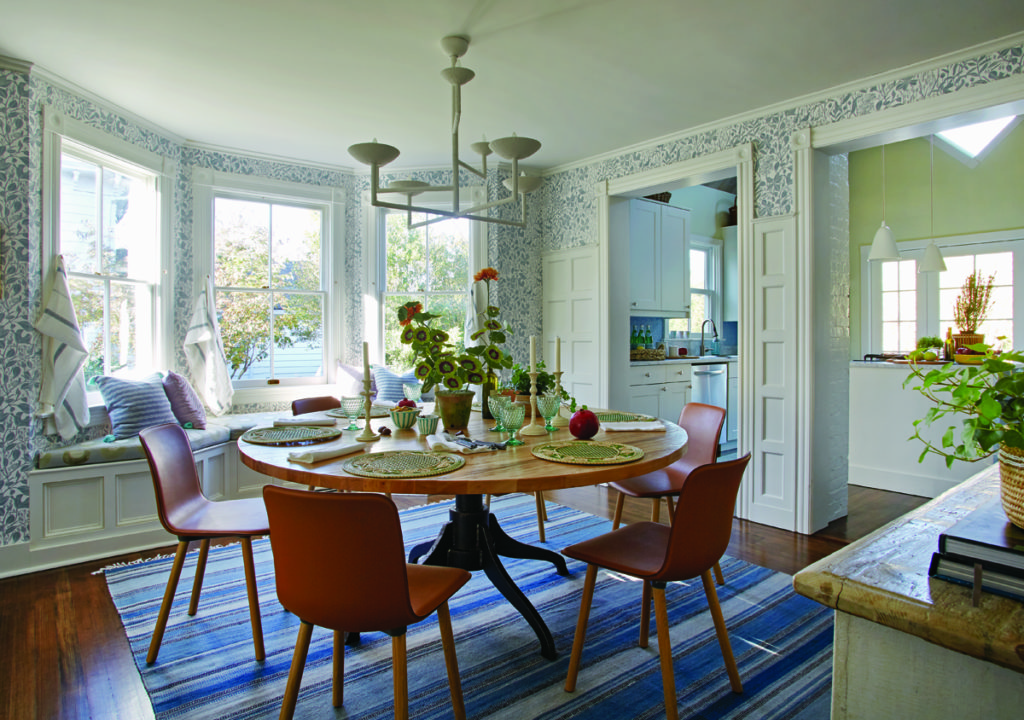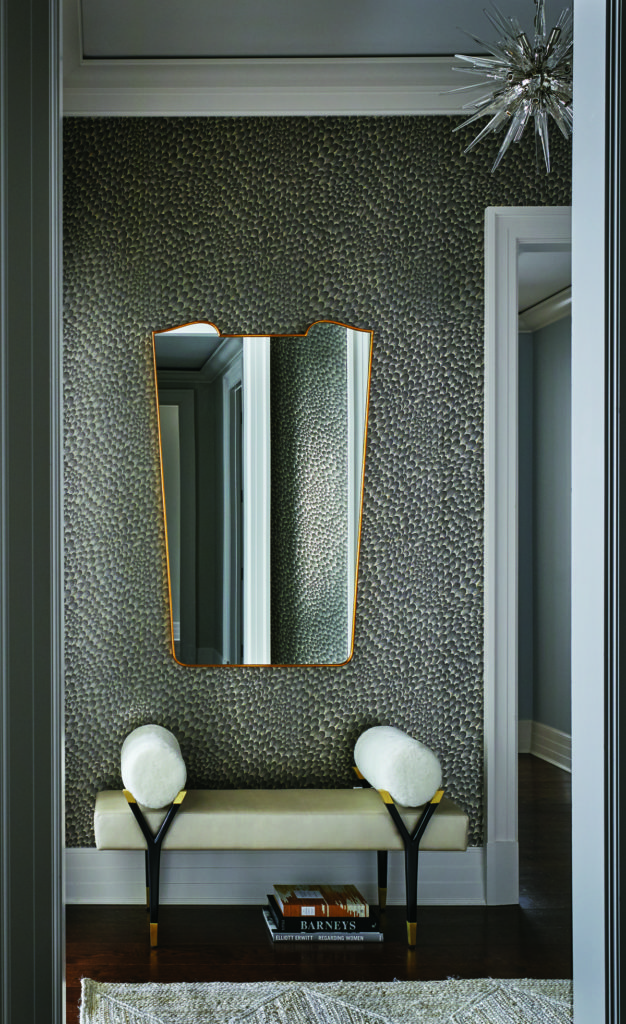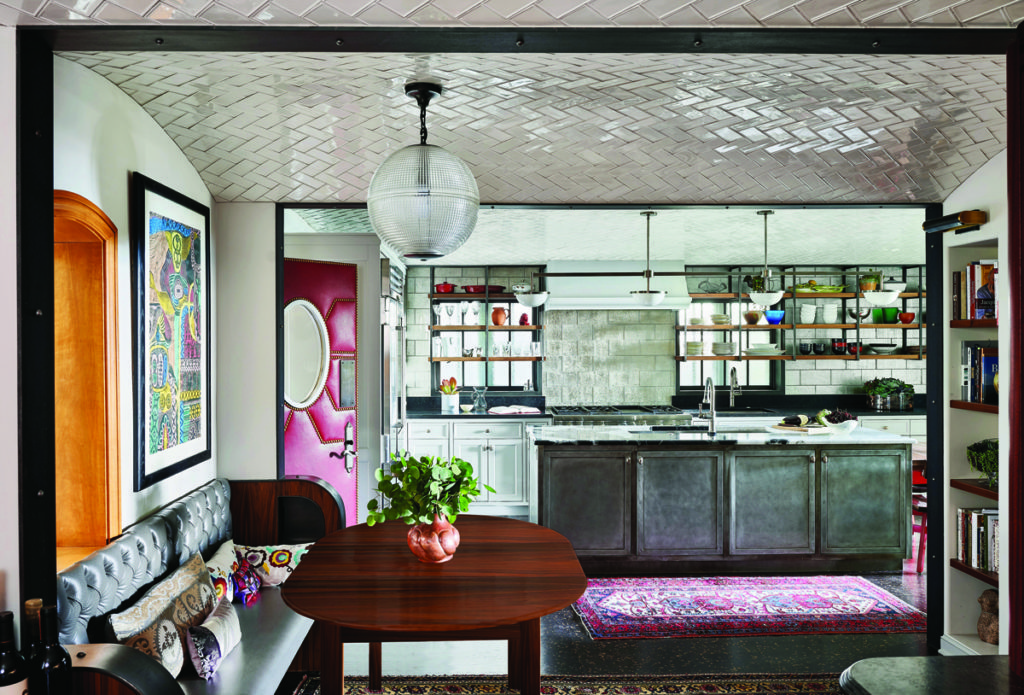What’s in and what’s out usually dominate design discussions, but homeowners’ desires today transcend colors or square footage. Instead, words like comfort, happiness and versatility pepper conversations with designers asked about the consumer mindset today.
“Generally speaking, everyone wants things to be more casual these days, even in the city.” Even in more formal homes, “they want extremely relaxed, flexible, comfortable,” observes Manhattan designer and member of the AD 100 Liliane Hart. Overall, she says, “People are living more intimately.” A majority want to use all the spaces in their home with no room off limits to children or dogs.

Photo Mark Roskams | Liliane Hart Interiors
“Comfort is becoming even more of a request, and we are using a lot of performance fabrics — clients appreciate the durability,” says Christopher Grubb, founder and president of Arch-Interiors Design Group in Beverly Hills.
“People are much more in tune to their interiors, men and women alike,” observes Tony Sutton, president and owner of Est Est, an award-winning interior design firm in Scottsdale. “Men are much more involved in the process because they do care, and they understand the psychological influence the space has on mood.”
In a way, it all comes down to happiness, says Elissa Morgante, founding partner of Morgante Wilson Architects. “When we collaborate with our clients, we are more focused than ever on the simple priority of creating a home that brings them pleasure every time they walk in the door. There’s a lot of freedom in that approach to design because you’re not concerned about following rules or making a safe choice or thinking about whether something is in or out of style. Instead, the guiding principle is the idea that your home should make you happy — and that’s all about personal choices rather than following trends.”
Embracing Personal Style
Homeowners, particularly the affluent, continue to expect their residence to be uniquely their own. Compared to even a few years ago, they are surprisingly liberated and apt to pursue rooms, aesthetics, and special interests they consider essential to their lifestyle. Features such as outdoor connections, ancillary spaces and versatility contribute even more to desirability and value.
“With all the choices on the market, I find people are able to embrace their personal style and not feel like they have to follow a fad. Even trends they may not be fully committed to, if it feels right for a particular space or project, they will use a bit of it,” says Grubb.
“I am seeing a little bit of settling as far as styles are concerned. People aren’t as nervous about what’s the most popular style,” says Sutton. And the good news, he says, referencing the mix of architecture in new construction and renovations, is a variety of styles are trending across the U.S.

Donna Mondi
Inside and outside, the farmhouse style is waning. Contemporary is growing as a top preference, particularly for elevations, while newly streamlined expressions make traditional and regional vernaculars increasingly relevant, stoking demand.
Thinking Long-Term
No longer living in the moment and ready to change interiors on a whim, homeowners are looking for value and thinking long-term, something designers say they have been preaching for years. Antiques, whether single statement pieces or authentic accents, are back in favor along with higher-quality furnishings. “Smart people realize the value in doing it right the first time as opposed to instant gratification,” says Sutton.
“Pick a statement piece for the room, whether it’s a stunning chandelier, dramatic wall finish, or oversized piece of art, and put your money there. Save money on side tables, accent pieces, accessories, and pillows. Those items can be updated every 5-10 years to give you a new look,” explains Chicago designer Donna Mondi.
It’s All in the DETAILS
Rather than broad sweeps, details and incremental changes tell this year’s design story as linear forms begin to give way to softer shapes. “There is a strong swing toward sculptural furniture. Anything round, such as a curved banquette, round pillows, round rugs, sofas with curves, are really in. I am seeing a lot of color again. Everyone wants it. They are not interested in grey interiors anymore. I am using color in fabrics, even walls. The combination of rounded shapes and more color creates a lot visual interest,” shares Hart.

Morgante Wilson
“At our firm, we’ve noticed increased interest in architectural details this year, such as arched entryways and wood paneling. Plaster walls are also extremely popular. When it comes to furniture, caning, reeded details and curved forms, seem to be taking center stage,” says Anelle Gandelman, founder of A-List Interiors in Manhattan.
Black is back as a preferred and versatile design element, and it’s one indication of industrial chic finding its way into more residential settings. From black frames surrounding doors and windows, to the use of metals in railings, to window sizes and patterns along with laser-cut ornamental metal, elements associated with the industrial style have become desired additions to interiors.
